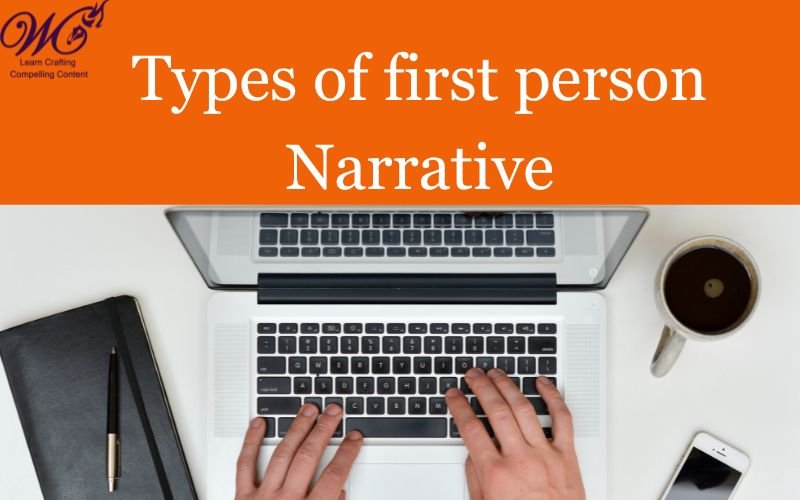First person narrative, a powerful storytelling technique, immerses readers directly into the narrator’s mind, creating a vivid and intimate experience. Writers use this narrative perspective to add credibility, express personal opinions, and build suspense.
Exploring the various types of first person narratives, such as first person central and first person peripheral, allows for crafting compelling and authentic stories. This ultimate 2024 guide delves into the nuances of first person narrative, offering tips on how to write descriptively, create an immediate bond with readers, and avoid common pitfalls.
Join us as we explore the art of first person storytelling and unlock its full potential.

What is First Person Narrative/ Point of View:
First person narrative, or first person point of view, is a storytelling technique where the narrator speaks from their own perspective using “I” or “we.” This method allows readers to experience the story through the narrator’s eyes, thoughts, and emotions, creating a close and personal connection. It provides direct insight into the narrator’s mind, adding authenticity and depth to the narrative. This perspective is commonly used in literature to create intimate and engaging stories.
Why First Person Narrative is Written:
You can add the following by writing your content in first person narrative or point of view.
Add Credibility:
First person narrative adds credibility by presenting the story through the eyes of a character directly involved in the events. Readers gain direct access to the narrator’s thoughts and feelings, making the narrative more believable and authentic. This perspective fosters trust and relatability, as the audience experiences the events alongside the narrator, creating a sense of immediacy and genuine connection to the unfolding story.
Express Opinion:
First person narrative allows writers to express personal opinions and perspectives uniquely. Through the narrator’s voice, authors can convey strong, subjective viewpoints, giving readers insight into the character’s inner world. This method enhances character development and adds depth to the narrative, as the audience understands the motivations, biases, and emotions driving the narrator’s actions and decisions, making the story more engaging and thought-provoking.
Create Suspense:
Creating suspense is a key reason for using first person narrative. This perspective limits the reader’s knowledge of the narrator’s experiences and observations, maintaining an air of mystery and uncertainty. As the narrator uncovers information and faces challenges, the reader shares in the suspense and tension. This immersive approach keeps readers on edge, eager to discover what happens next, and enhances the overall impact of the story.
Enhance Emotional Connection:
First person narrative enhances the emotional connection between the reader and the narrator. By sharing intimate thoughts, feelings, and experiences, the narrator invites readers to empathize deeply with their journey. This perspective fosters a strong bond, making the reader more invested in the character’s struggles and triumphs. The emotional resonance created by this narrative style can lead to a more immersive and memorable reading experience.
Provide Unique Perspectives:
First person narrative offers unique perspectives by allowing diverse voices to tell their stories. Each narrator brings their background, culture, and personality, enriching the narrative with varied viewpoints. This approach can highlight different aspects of the story and provide a more nuanced understanding of the plot and characters. It also allows readers to experience the world through the distinct lens of the narrator, adding depth and diversity to the storytelling.
Types of First Person Narrative/ Point of View:
First Person Central:
First person central narrative features a protagonist who narrates their own story. The central character, directly involved in the plot’s main events, offers a firsthand account of their experiences, thoughts, and emotions. This perspective allows readers to intimately understand the protagonist’s motivations and challenges, creating a strong connection with the main character. It enhances the story’s immediacy and personal impact by providing direct insight into the central figure’s journey.
First Person Peripheral:
First person peripheral narrative involves a narrator who is a secondary character rather than the protagonist. This narrator observes and recounts the protagonist’s story, providing an external perspective on the main events. While still personal and engaging, this point of view allows for a broader view of the plot and other characters. The peripheral narrator’s insights and interpretations add depth and complexity, offering readers a unique angle on the central narrative.
First Person Plural:
First person plural narrative employs “we” instead of “I,” involving a collective group of narrators. This perspective can represent the thoughts, feelings, and experiences of a community or group, offering a unique and cohesive voice. It creates a sense of unity and shared experience, allowing readers to explore how events impact a collective rather than an individual. This type of narrative can be powerful for stories emphasizing communal experiences and collective identity.
First Person Stream of Consciousness:
First person stream of consciousness narrative delves deeply into the narrator’s mind, presenting thoughts and feelings in a continuous flow. This technique mimics the natural, often chaotic thought processes of the narrator, providing an intimate and unfiltered view of their inner world. It captures the immediacy of thought, emotions, and perceptions, allowing readers to experience the narrator’s psyche in real time. This style can create a deep psychological portrait of the character.

How To Write First Person Narrative:
Establish the Narrator’s Voice:
Creating a distinct and authentic narrator’s voice is crucial in first person narrative. The voice should reflect the narrator’s personality, background, and experiences, making it unique and believable. Pay attention to the narrator’s speech patterns, vocabulary, and tone to ensure consistency. This voice will guide readers through the story, so it needs to be compelling and true to the character.
Maintain Consistency in Perspective:
Consistency in perspective is key to a successful first person narrative. Ensure the narrative stays true to the character’s viewpoint, avoiding shifts into other characters’ thoughts or knowledge the narrator wouldn’t possess. This consistency helps maintain the story’s credibility and keeps readers grounded in the narrator’s experience, making the narrative more immersive and believable.
Be Descriptive:
Use vivid descriptions to bring the narrator’s experiences and surroundings to life. Since the story unfolds through the narrator’s eyes, their sensory perceptions—sights, sounds, smells, tastes, and touches—should be richly detailed. These descriptions help readers visualize the setting and events, making the narrative more engaging and immersive. The narrator’s unique perspective on these details adds depth to the story.
Create an Immediate Bond with the Reader:
Engage readers from the start by establishing a strong connection between the narrator and the audience. This can be achieved through relatable emotions, intriguing insights, or a compelling backstory. A narrator who quickly earns the reader’s empathy or curiosity will keep them invested in the story. Use the narrator’s personality and experiences to draw readers into their world.
Avoid Repetition with “I”:
While first person narrative naturally involves frequent use of “I,” it’s important to avoid repetitive sentence structures. Vary sentence openings and structures to maintain a smooth, engaging flow. This variation prevents monotony and keeps the narrative dynamic. Employ different ways to express the narrator’s thoughts and actions without overusing “I” to maintain reader interest.
Stay in Character:
Remain true to the narrator’s character throughout the story. Ensure that their actions, thoughts, and dialogue are consistent with their established personality and background. This authenticity enhances believability and keeps readers connected to the narrator. Any deviation from the character’s established traits should be justified by the plot or character development.
Create a Strong Narrator:
Develop a well-rounded and compelling narrator who can carry the story. This includes giving them a clear voice, a detailed background, and a distinct personality. A strong narrator should have identifiable motivations, strengths, and flaws that make them relatable and engaging. Their unique perspective should add depth and interest to the narrative, making the story memorable.
Common Mistakes To Avoid In First Person Narrative:
- Avoid overusing “I” statements.
- Develop secondary characters alongside the narrator.
- Maintain consistency in perspective throughout the narrative.
- Establish a distinct and authentic narrator’s voice.
- Use descriptive detail to enhance immersion.
- Ensure the narrator’s behavior aligns with their personality.
- Explore internal conflicts to add depth to the narrator.
- Integrate backstory naturally throughout the story.
- Convey the narrator’s emotions to create a connection.
- Show rather than tell the story’s events and emotions.
Conclusion:
In the vast landscape of storytelling, first person narrative stands as a formidable pillar, offering readers an unparalleled journey into the depths of characters’ minds and emotions. Throughout this comprehensive guide, we’ve navigated the intricacies of this narrative technique, uncovering its ability to forge intimate connections, evoke powerful emotions, and craft compelling stories.
By delving into various types of first person perspectives and mastering essential writing techniques, we’ve equipped ourselves with the tools to wield this storytelling power effectively. As we conclude this exploration, let us embark on our writing endeavors with newfound confidence, ready to harness the full potential of first person narrative and captivate audiences with our tales.
FAQs:
What is an example of a personal narrative sentence?
An example of a personal narrative sentence could be: “I remember the excitement of my first day of school.
Is there any other type of narrative in writing?
Yes, there are several other types of narrative in writing, including third person narrative, second person narrative, and omniscient narrative.
Benefits of writing in first person point of view?
Writing in the first person point of view offers benefits such as creating a strong connection between the narrator and the reader, providing direct insight into the narrator’s thoughts and emotions, and enhancing authenticity and immediacy in storytelling.

